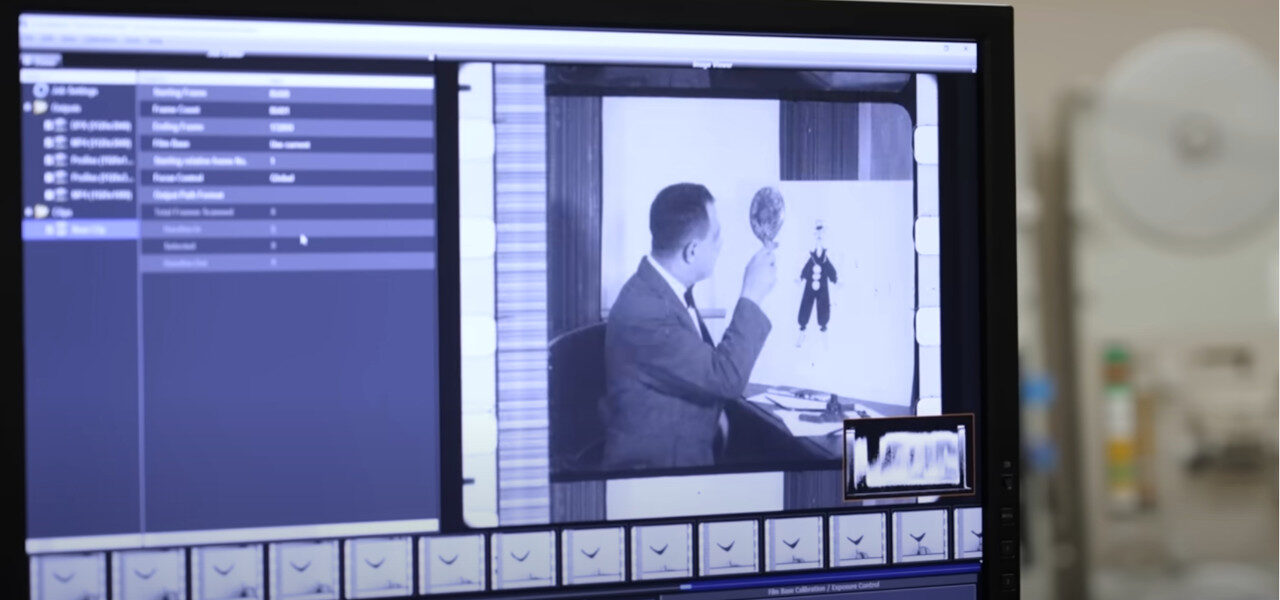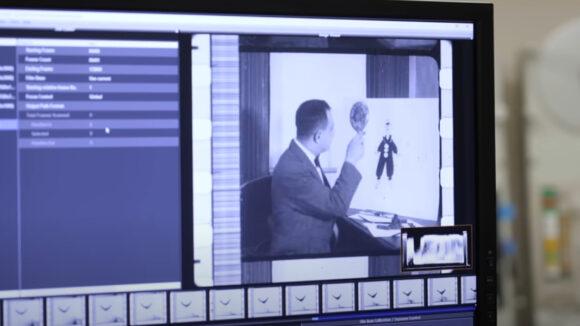

Watch: This Video Explains What Goes Into Restoring A Classic Animated Film
What does it mean when we say a vintage piece of animation has been restored? Here’s the first time that we’ve seen an easy-to-understand explanation of the animation restoration process. The video explains the process used by the team at Blackhawk Films in Burbank.
Shared on the Adam Savage’s Tested Youtube channel, the video features a visit with the Blackhawk team and restoration expert Steve Stanchfield, who also runs the home video distribution company Thunderbean Animation.
Stanchfield talks through the process of finding and scanning decades-old film reels, as well as providing a short introduction to how digital restoration works. There are also some really fun hand-drawn and stop-motion clips from a classic Koko the Clown short that the Blackhawk team was working on at the time.
There’s a bit of shop talk in the video, but in general, it’s easy to follow even with no prior knowledge of restoration technology or techniques. The film is made all the more enjoyable by the clear pleasure that Stanchfield and the Blackhawk team get from doing their work.
Working in chronological order, the video examines the steps required to restore a classic film starting with finding the old film reels. These rare pieces of physical cinema history are usually found among collectors and in archives. In many cases, Stanchfield says, there may only be one copy of a particular film, and it’s a matter of luck if and when it’s unearthed.
After that, Blackhawk techs repair the physical reel. Working with antique nitrate reels, the workers must be extremely careful. A frayed edge or a weak splice can cause a catastrophic tear or break in the original reel, so every precaution is taken to ensure that the film is in its strongest state before scanning begins.
Once the integrity of the reel is ensured, it’s run through a Lasergraphics scanner that provides a brilliantly detailed image. According to the video, the machine being used at Blackhawk today can scan up to 10k resolution.
Finally, a digital copy of the film is loaded onto a drive so that restorers can begin their work. As much as restoration is a technical process, it’s an aesthetic one as well, so Stanchfield likes to hire animators to do the restoration of animated films. “If you’re an animator you can catch a problem in a single frame,” he says.
While the goal of restoration is to create a clean and vibrant copy of the original, Stanchfield says it’s important not to change too much about the footage they receive:
To me, it makes no sense to make these [into] brand-new films. I like the idea of them looking really good, but these are things that were made on film. They’re part of the era, and we should try to preserve that as much as anything else. I don’t think we should be altering what the film looked like, beyond making it a very, very nice copy.
Pictured at top: A Koko the Clown short is scanned from its original 35mm nitrate reel.
